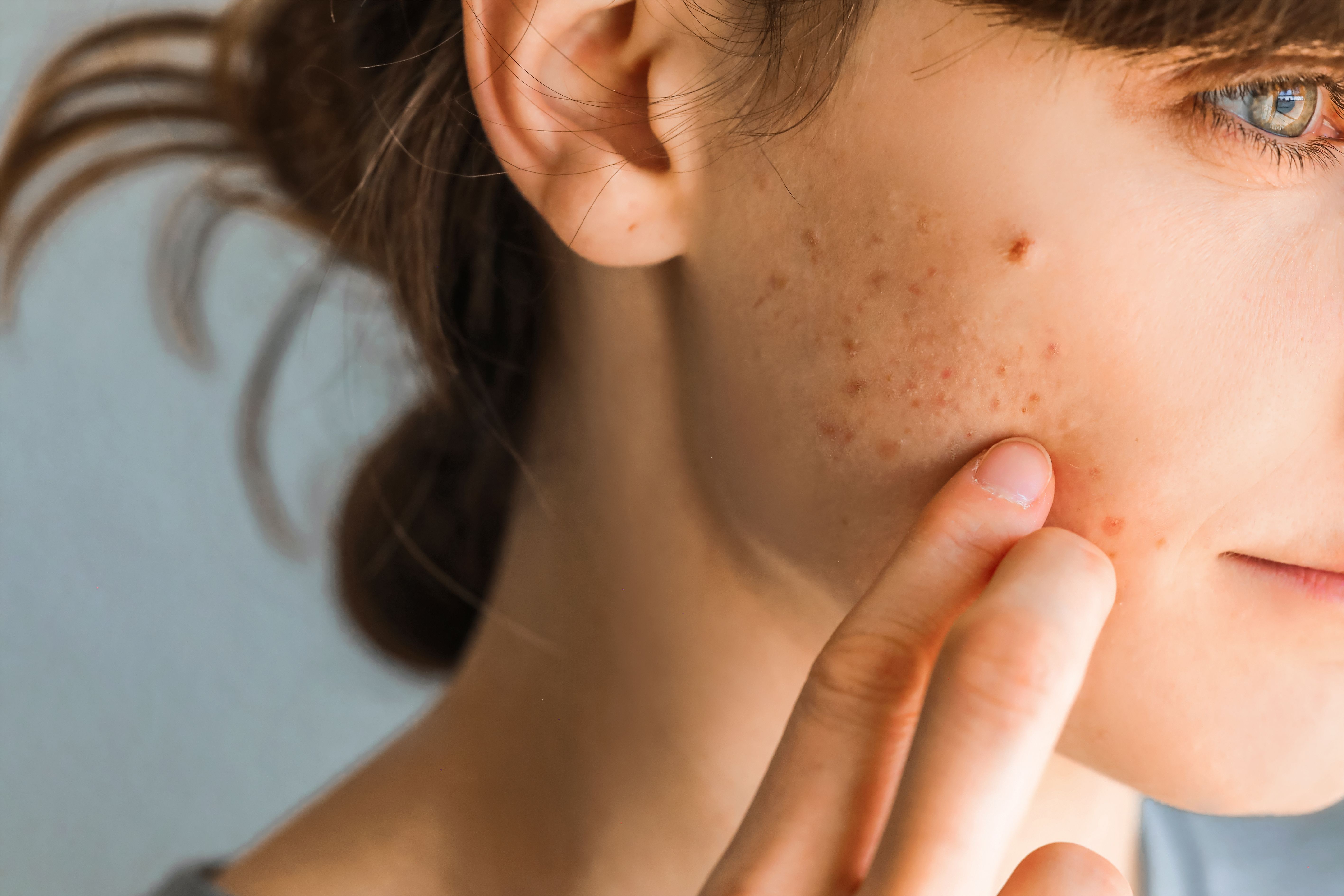- Acne
- Actinic Keratosis
- Aesthetics
- Alopecia
- Atopic Dermatitis
- Buy-and-Bill
- COVID-19
- Case-Based Roundtable
- Chronic Hand Eczema
- Chronic Spontaneous Urticaria
- Drug Watch
- Eczema
- General Dermatology
- Hidradenitis Suppurativa
- Melasma
- NP and PA
- Pediatric Dermatology
- Pigmentary Disorders
- Practice Management
- Precision Medicine and Biologics
- Prurigo Nodularis
- Psoriasis
- Psoriatic Arthritis
- Rare Disease
- Rosacea
- Skin Cancer
- Vitiligo
- Wound Care
News
Article
Study Outlines Prurigo Nodularis and Psychiatric Comorbidities
Author(s):
The review found that patients with PN are approximately 1.3 times more susceptible to depression and 1.9 times more likely to experience anxiety.
Image Credit: © this_baker - stock.adobe.com

The pathogenesis of prurigo nodularis (PN), a chronic inflammatory skin condition characterized by intense itching, involves immune system and immune-neurologic network dysfunction.1 Studies have reported a significant association with psychiatric comorbidities, including depression, anxiety, and suicidal ideation.2 However, the specific relationship between PN and these mental health issues remains unclear. Researchers noticed this need for a comprehensive assessment of the prevalence and odds of psychiatric conditions in patients with PN. To address this, they conducted a systematic review and meta-analysis to estimate the pooled prevalence and odds of depression, anxiety disorders, and suicidal ideation or self-harm in individuals with PN.3
Methods and Materials
Researchers completed comprehensive searches of MEDLINE, EMBASE, PsychINFO, Science Direct, and Web of Science up to August 2023. The review included observational studies that assessed psychiatric comorbidities in patients with PN, focusing on those with at least 10 PN subjects. Data collected included sociodemographic, medical, and methodological information, with quality assessed using the Newcastle-Ottawa Scale.
Results
The meta-analysis included 14 studies encompassing over 24,000 patients with PN. The results were broken down into several categories:
Depression: Among 12 studies (n = 13,460), 8 studies (n = 10,569) were analyzed for odds ratios. The pooled prevalence of depressive disorders in patients with PN was 19.3% (95% CI 18.6–20.1%), which researchers found comparable to the 19.1% prevalence in the general population. However, they found hospital-based studies reported a higher prevalence of 34.2%. The association between PN and depression was significant, with an odds ratio of 2.53 (95% CI 2.40–2.66), indicating a markedly increased risk of depression among patients with PN.
Anxiety: Anxiety was assessed in 10 studies (n = 18,277), with 6 studies (n = 15,386) included in the meta-analysis. The pooled prevalence of anxiety in patients with PN was 25.7% (95% CI 25.0–26.4%), compared to 4.1% in the general population. Researchers stated hospital-based studies showed an even higher prevalence of 36.3%. The odds ratio for anxiety in patients with PN was 3.31 (95% CI 2.50–4.39), reflecting a strong association and significantly increased risk of anxiety compared to the general population.
Suicidal Ideation/Self-Harm: Six studies (n = 11,966) examined suicidal ideation/self-harm, with 5 studies (n = 11,795) included in the meta-analysis. Researchers found the prevalence of suicidal ideation/self-harm in patients with PN was 5.9% (95% CI 5.5–6.3%). The odds ratio for these outcomes was 2.44 (95% CI 2.25–2.63), indicating a significantly higher risk in patients with PN compared to the general population, where the prevalence was 0.7%. In hospital-based studies, the prevalence was 6.6%.
Conclusion
This meta-analysis is the first comprehensive review to assess the prevalence and odds ratios of depression, anxiety, and suicidal ideation/self-harm in patients with PN by examining all available observational studies. The findings indicate that patients with PN are approximately 1.3 times more susceptible to depression, 1.9 times more likely to experience anxiety, and 2 times more prone to suicidal ideation/self-harm compared to healthy controls. Additionally, patients with severe PN, who report a worse quality of life, often show higher rates of these psychiatric conditions.
Researchers stated these findings underscore the need for heightened awareness among healthcare providers and payers regarding the psychiatric comorbidities associated with PN. They suggested that further research is essential to understand the complex interactions between PN and these mental health conditions and to develop effective preventive and therapeutic strategies.
References
- Williams KA, Huang AH, Belzberg M, et al. Prurigo nodularis: Pathogenesis and management. J Am Acad Dermatol. 2020;83(6):1567-1575. doi:10.1016/j.jaad.2020.04.182
- Kwatra SG. Breaking the itch-scratch cycle in prurigo nodularis. N Engl J Med. 2020;382(8):757-758. doi:10.1056/NEJMe1916733
- Jiang W, Chen J, Li N, et al. Depression, anxiety and suicidal ideation in prurigo nodularis: A systematic review and meta-analysis. Acta Derm Venereol. 2024;104:adv40677. Published 2024 Aug 5. doi:10.2340/actadv.v104.40677
Newsletter
Like what you’re reading? Subscribe to Dermatology Times for weekly updates on therapies, innovations, and real-world practice tips.











